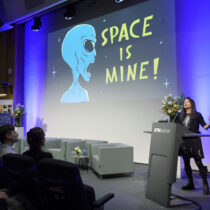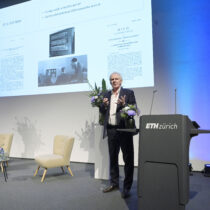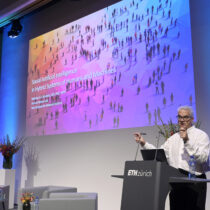Industrial Metaverse: Hype? Hope? A bit of both?
March 5, 2024Hosted by Chris Luebkeman, Head of ETH’s Strategic Foresight Hub, the Global Lecture Series: Industrial Metaverse began with Peter Körte, Siemens CTO and CSO giving a 20-minute talk on the history of the metaverse and its present application in the Siemensverse. Also on hand for the subsequent discussion was Professor Torbjörn Netland, Head of Head of Chair of Production and Operations Management at ETH.
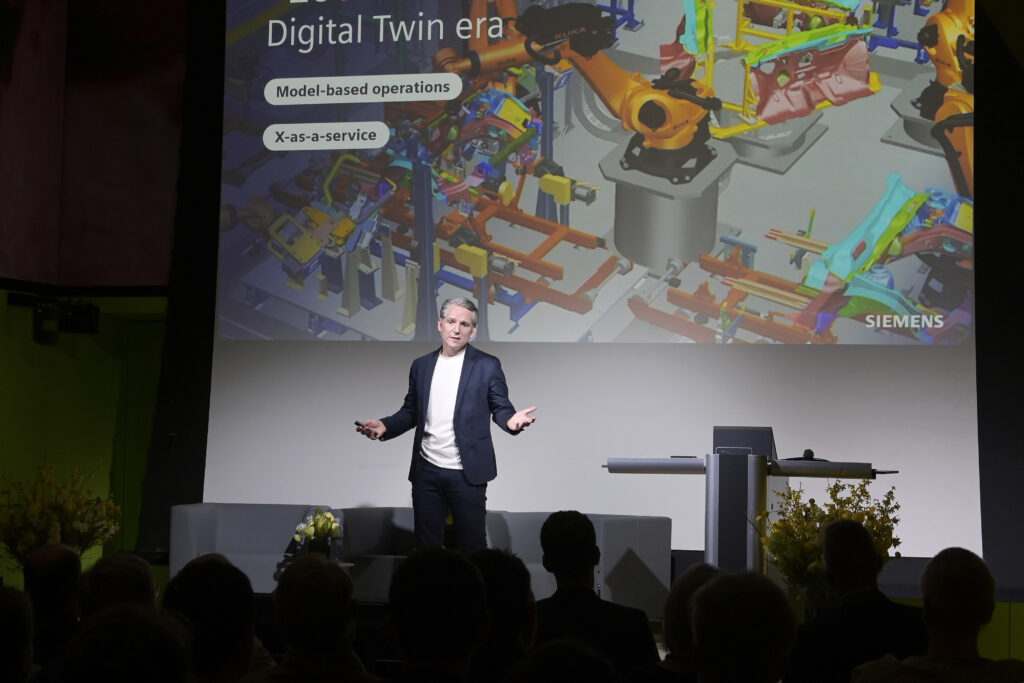
For those of you who, like me, saw the lecture title and thought “Eek, what?”: some enlightenment. This is not the self-referential “meta” that’s become part of informal speech. For which the often cited example is: the actor Michael Keaton, who played Batman in the early 90s, aimed to refresh his somewhat flagging career by starring in an artsy film as an actor known for playing a superhero who is trying to restart his career by starring in a high-brow Broadway play. Another example might be Mark Zuckerberg renaming his company Meta.
This, however, is the Greek “beyond” meta, as in more than just using machines to compute, instead expanding them to create a digital reality – a metaverse – for highly advanced simulations that aim to improve the world, while selling a few things along the way.
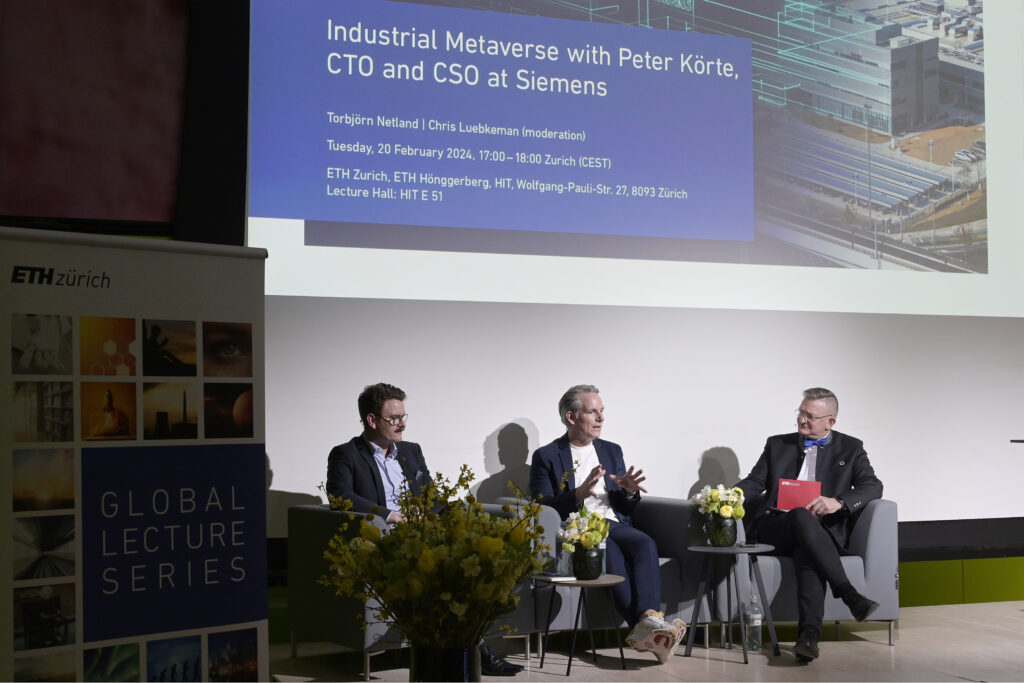
But within a relatively short time span, the metaverse has gone from being received with excitement to being declared “dead” less than a year ago by Business Insider. So why are we here?
Peter Körte begins by explaining it’s the hype about the metaverse, not the metaverse itself, that is dead. Now that the initial excitement has worn off, we regular people can begin to realize that the metaverse – like a movie star who was “discovered overnight” – has actually been steadily evolving since the 1970s. And the engineers can finally get back to work without having to stop to answer the same dumb questions about gaming avatars all the time.
Körte begins his enjoyably uncomplicated presentation with the fact that ABI Research 2022 & ST Market Estimates has segmented the metaverse into three markets: consumer (social networks, gaming, e-learning); enterprise (virtual storefronts, advertising, training, meetings); and industrial. Which is why we’re here. Körte paraphrases ABI as saying the industrial metaverse “is growing the fastest financially, because its value can be clearly defined and the building blocks for doing so already exist.”
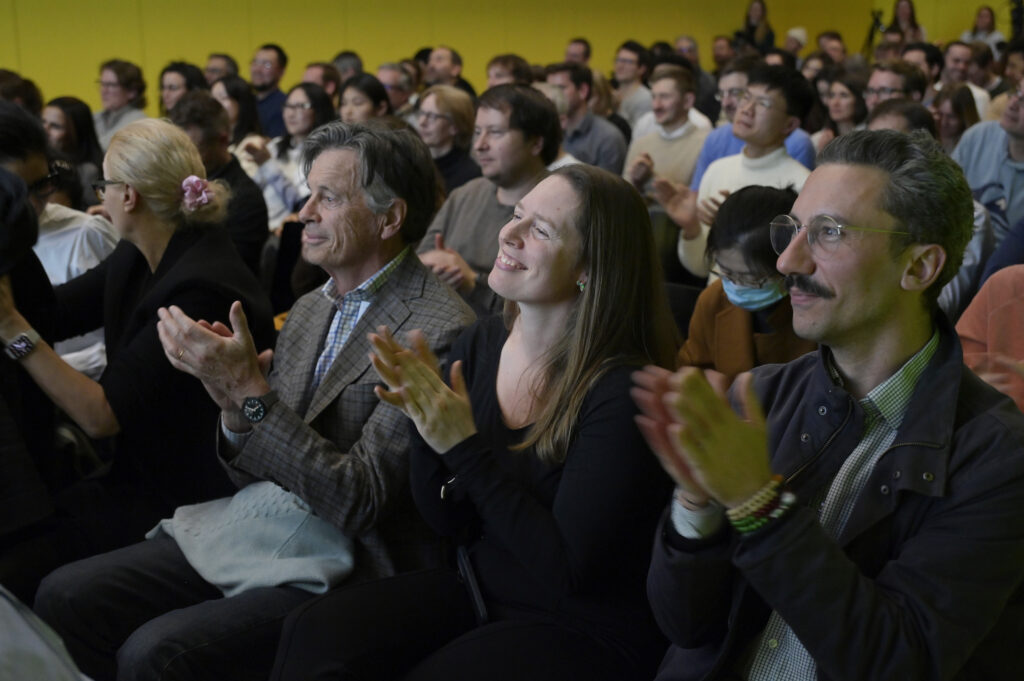
A key building block is the digital twin – that is, a digital world that matches the one in reality. There you can simulate how things could work in the real world through multiphysics, which allows you to see how different features of physical systems would interact.
One of the most optimistic examples of this is a Siemens solution that makes it much easier – and approximately 90% less expensive – for people who have lost a limb to acquire a prosthesis. And one that not only fits and works, but is also much lighter and looks more natural than what has previously been available. The company that makes these prostheses, Unlimited Tomorrow, uses computer models to simulate and subsequently create customised, personalised limbs in a matter of weeks instead of the usual months – a highly significant improvement, especially for children, who regularly outgrow a conventional prosthetic limb before really having had a chance to use it.
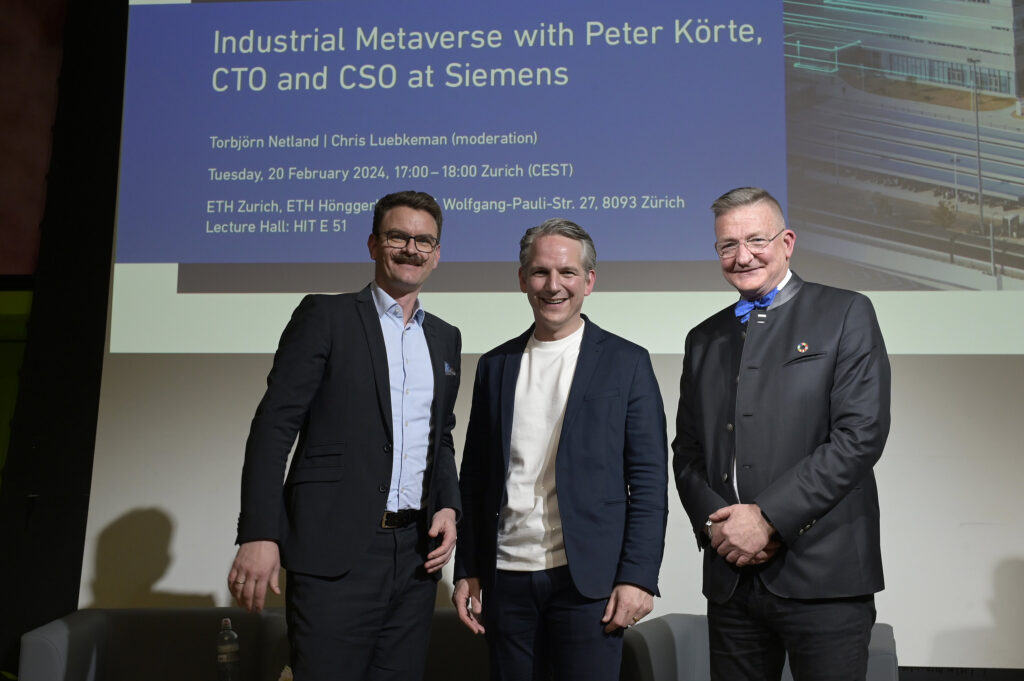
That there is great potential in digital twinning and simulation is also supported by the urban development project Siemensstadt Square. This new district projected for Berlin will include residential buildings, schools, stores and factories, to be planned, built and operated using a digital twin – and designed to be 20% more productive and 40% more flexible. This will include the implementation of intelligent technologies and renewable energy to make the district both carbon-neutral and energy-efficient.
The Siemensstadt Square project illustrates the industrial metaverse Siemens sees for the future: “Everything you build will exist twice,” says Körte. “Once in the real world and once in the digital world. We build the physical plant based on the simulations, then collect the real time data and feed it back into the digital twin to see how accurate the model was. This creates a feedback loop to tweak the models so they can be more effective, useful.”
But there is a way to go yet before these kinds of ideas are widely implemented. New machines can’t connect to or understand old ones; people lack the skills to hit the ground running. “This will only work if we all collaborate,” says Körte. “It will take many companies to get us there.”
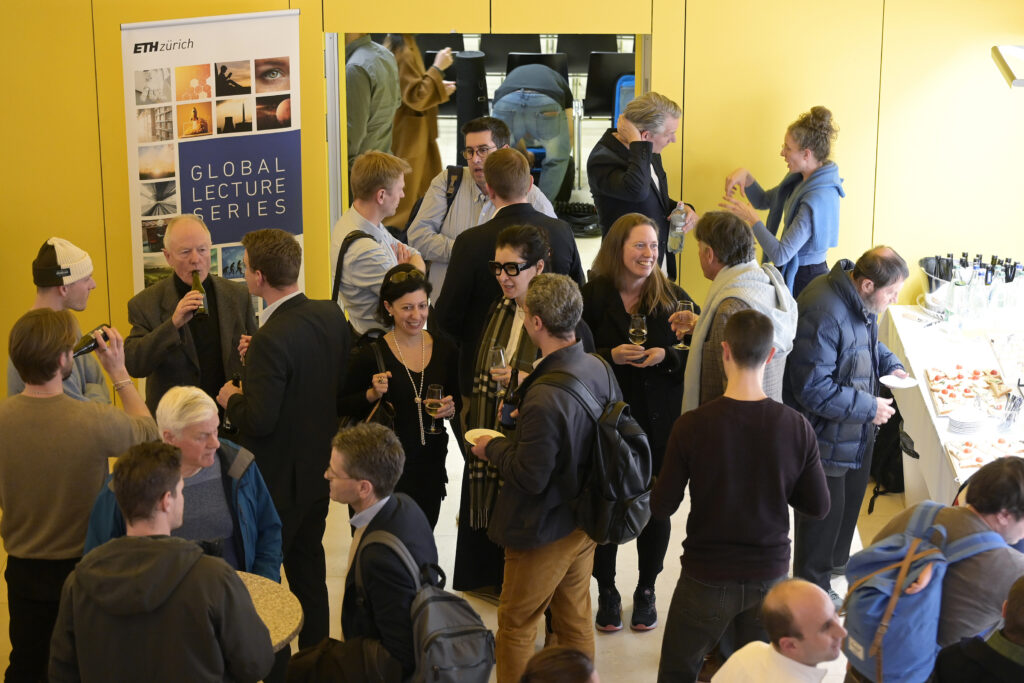
Torbjörn Netland is also concerned about the human factor. About “making better workplaces, not just more profitable ones.” And while large companies can fly a helicopter on Mars, “Just try to put a human pilot in there – it’s not going to happen, at least not in the next two or three years”, he says. “The role of the human is perhaps sometimes undervalued in thinking about the metaverse. Just because it’s industrial, doesn’t mean there are no humans.”
The question is raised as to how people fit into this process and how they will stay in the loop. Netland says because technology moves so fast, we need to educate businesses, “but it’s always been like this.” He adds: “We don’t all have to know everything … it’s too much … we have to work with others who have the knowledge we lack”.
Here again, the focus is on collaboration. One more instance of the world needing to come together on solutions to improve life for all beings on the planet.
Watch the full recording:
Find out more about our ETH Global Lecture Series here.


